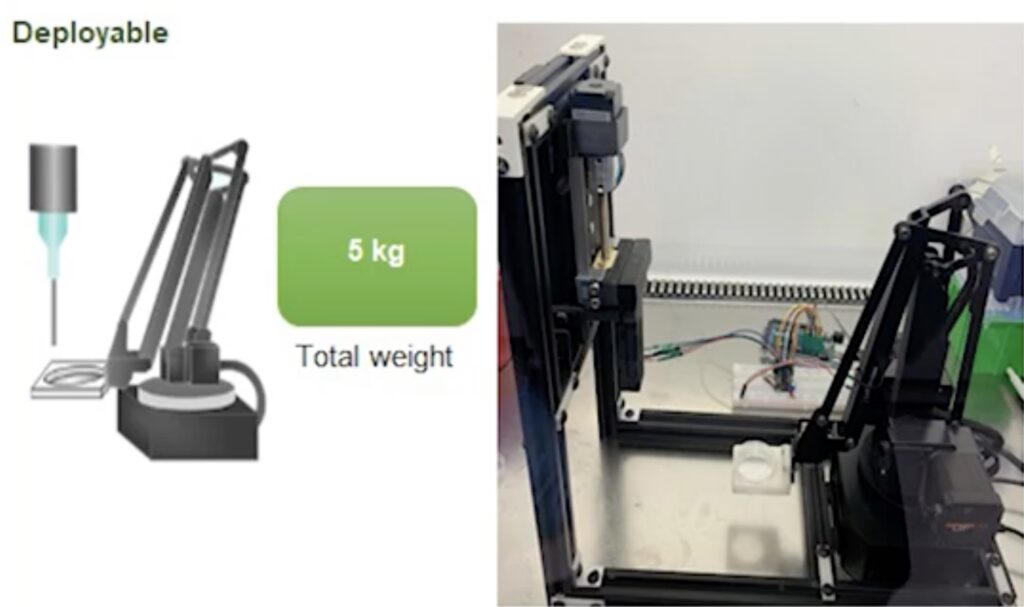Portable bioprinter could help fight cancer

To test experimental cancer-fighting therapies, researchers need cancerous tumors to treat. While lab animals, like mice, can provide those tumors, they come with many downsides. From ethical concerns to practical reasons, such as tumor isolation and repeatability, “natural” tumors come at a cost. Artificial tumors, made using real cells, can solve these problems. To create those, a team of researchers from the University of Cambridge and King’s College London designed a portable bioprinter dubbed “BioArm.”
A bioprinter is a 3D printer capable of fabricating organic tissue. A lot of research has been devoted to developing bioprinters for creating replacement organs and even food, but this purpose is just as important. By printing tumors, cancer researchers can fabricate the tissue to exact specifications. This reduces variables and provides better research control. These 3D-printed tumoroids are made of extruded hydrogel biological ink that contains cells. In about 90 seconds, researchers can print a tumor very similar to those from mice that they’re used to working with.
This entire bioprinter can fold up into a backpack. It has a custom print head driven by an Arduino Mega 2560 development board and Python code. That extrudes the biological ink. An off-the-shelf UFactory uArm Swift Pro robotic arm moves a Petri dish in three dimensions beneath the print head. The upright structure, which contains the print head, folds down when not in use in order to aid in packing. Deployment takes only 15 minutes and the entire machine weighs less than 11 pounds. The total cost to build the complete machine is under £1,000 ($1,250).